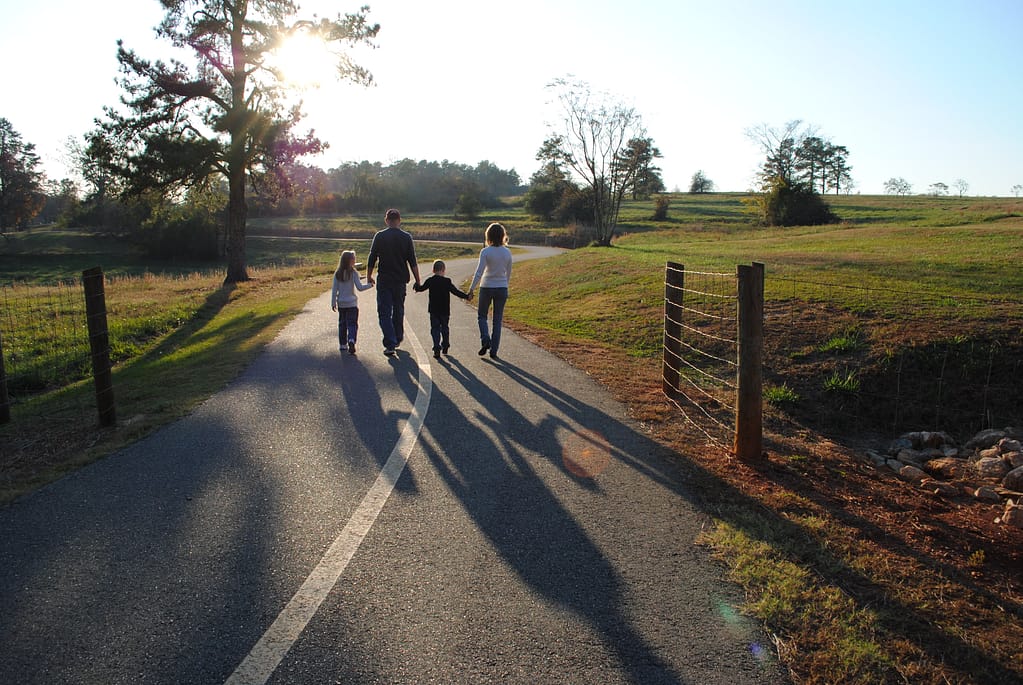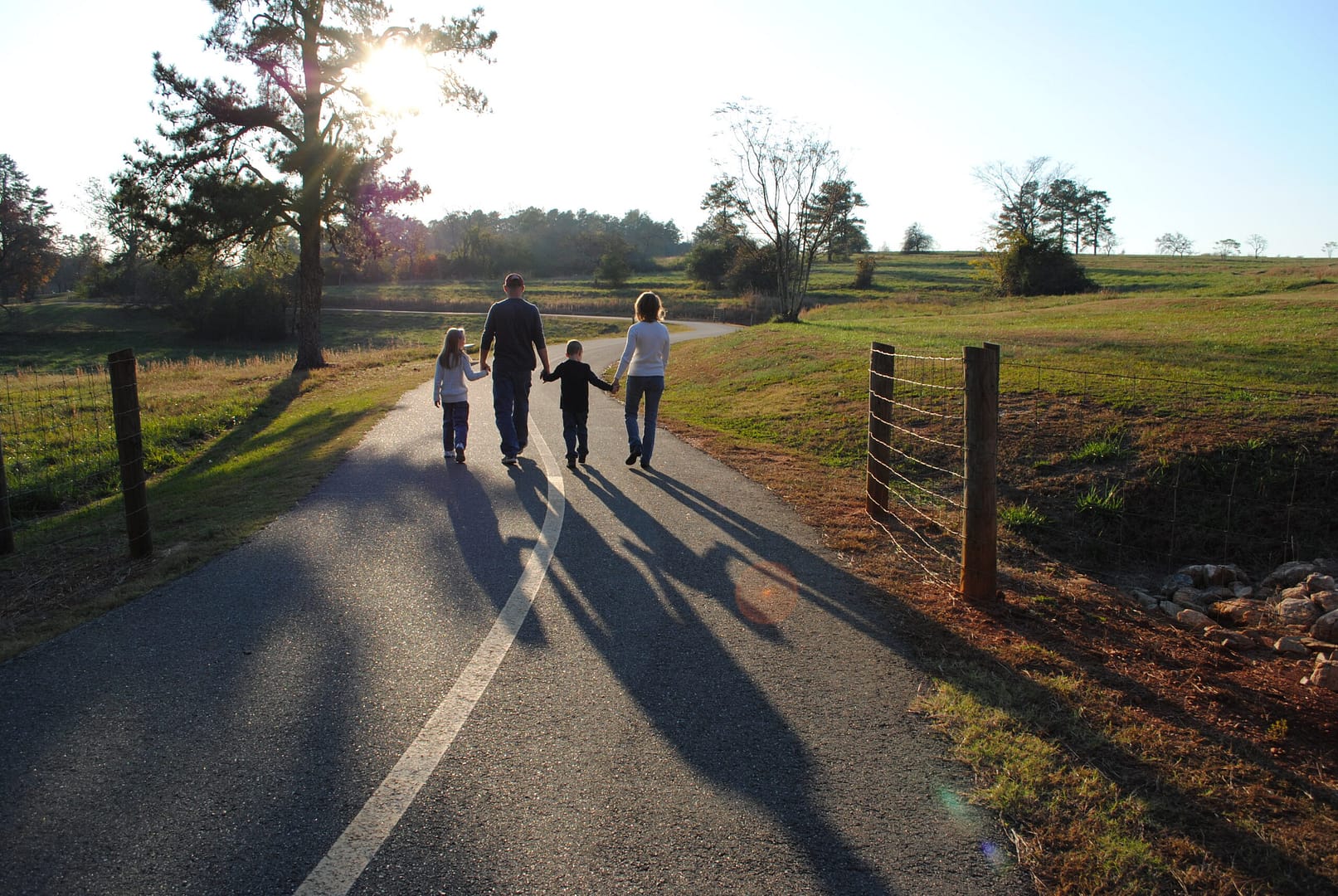This is one post in what will be a series of reflections on why we chose home education. Hint: it is about MUCH more than academics.
Schooling is about separation.
- Separating children from parents and siblings from each other.
- Separating children from the real world.
- Separating topics of study (subjects).
- Even separate, individual desks.
[For more information on this deliberate separation, see here and here.]
Schooling is based upon a factory model whereby children are educated in the same way Ford would assemble a Model T. Education and schooling are two different things.
One of the things about home education that really appealed to me was that it allowed, even sometimes encouraged, togetherness.
It is possible, even common, to keep that separation in home education. Many families do. Pinterest has tons of pictures of home-‘schoolers’ with individual desks and computers lined up along a wall. That did not appeal to me. Even the giant family tables with each child quietly working through individual workbooks or textbooks were not really what I envisioned. They were only together in the same room. I wanted more.
Instead, my vision of an ideal education included things like:
- Gathering on the couch or under a tree for family read alouds,
- Taking nature walks together,
- Preparing meals to be enjoyed around the family table,
- Building contraptions in the backyard with Dad,
- Creating Lego cities on the living room floor with siblings,
- Touring museums and historic sites with grandparents,
- Allowing plenty of time for sword fighting and other imaginative play in the backyard or local park.
I wanted family-style learning not factory-style learning.
My husband and I enjoyed spending time with our kids. We wanted them to enjoy spending time with each other. So as I planned each year, I remembered that vision of togetherness and structured our days and our curriculum to maximize that.

What did that look like in practice?
In education-ese, one could say: “I employed Charlotte Mason and a few Classical methods in a relaxed unit study format.” But I prefer to speak English, so…
I centered our literature, science, and art studies around four historical time periods (ancient, medieval, early modern, and modern.) Each year we would study a different time period together regardless of ‘grade level.’
To accomplish this, I read aloud from historical narratives, novels, and biographies while both kids would color, draw, knit, or build quietly. I asked questions occasionally during the reading to ensure that they were paying attention and retaining the information. Afterward, each one completed a notebooking page about what we learned and/or add key dates to a history timeline.
Science centered around the people, inventions, and discoveries of the historical time period we were exploring that year plus nature studies. We did projects and nature study together. Then both kids completed individual nature journal entries and lab reports.
For music and art, we studied the artists and work of the time period. Then we would complete projects or write about based on what we learned.
Writing consisted of two main segments: penmanship and composition (which includes grammar and spelling). This was incorporated into our other studies in the form of written narrations (notebooking pages & nature journal entries). I did assign the kids individual copywork assignments from literature, the Bible, or history or science books. Even though they were separate assignments, the kids worked on them at the same time.
Separate But Similar Learning
About the only things our kids did separately were literature, math, and enrichment courses. Individual literature assignments were based in the same time period but at different reading levels. Math assignments were separate – except when we implemented math game Fridays. Then, the kids even practiced math skills together. Enrichment courses included things like an online economics class, sports, music lessons, and co-op classes.
Regarding the co-op: we chose one which was parent-directed, not drop-off, and which offered classes for all ages during the same hours. It offered enrichment, not core classes. So even though the kids were in separate classes, it was less than 2 hours per week and we all arrived and left together.
And, of course, we also studied the Bible and worshipped together daily. Bible was not limited to a ‘subject,’ though. The truth of God’s Word permeated everything. Language, science, history, math – everything is designed reveal to us some aspect of the Creator and lead us to worship Him. But that is a topic for a different day.
Paradigm Shift
Obviously this method requires breaking free from the factory/schooling mindset. The rule that kids should study Algebra, US History, and Physical Science in 8th grade (or any grade) is not one that was handed down to Moses on stone tablets. It was made up by bureaucrats and book publishers who do not know you or your kids. As home educators, we are not bound by their formats or educational philosophies.

For most of us, that is a paradigm shift. As Christians, we work diligently to take every thought captive – including our thoughts about education. Even after years of educating my kids and then graduating them, I am STILL discovering Secular beliefs about education that I have absorbed. So I analyze them in light of God’s word and replace them with biblical beliefs. That is part of discipleship.
Called To Be Different
Do not be afraid to be different – from public schools, Christian private schools, or even other homeschools. You SHOULD be different.
Every family is unique. Therefore each family’s education routines will also be unique – even if their general priorities are the same. I have two kids, four years apart. You may have one kid – or twelve. They may be closer in age, or further apart. They may have special needs. You may be a single parent with limited time.
If what you are doing is biblical, is working, and meets your family’s priorities and children’s needs – then please keep doing that. Ignore this post.
However, if what you are doing is not working, or if you are seeking more togetherness in your home, then please feel free to consider and maybe implement one or two of the things I have shared here. You can use the education-ese keywords listed above to research other ideas that might work for you. Also be sure to check out my favorite home education resources here.
Regardless of what methods you choose – be sure you know WHY you have chosen home education. Write down your why. Revisit it frequently – especially on the hard days.

